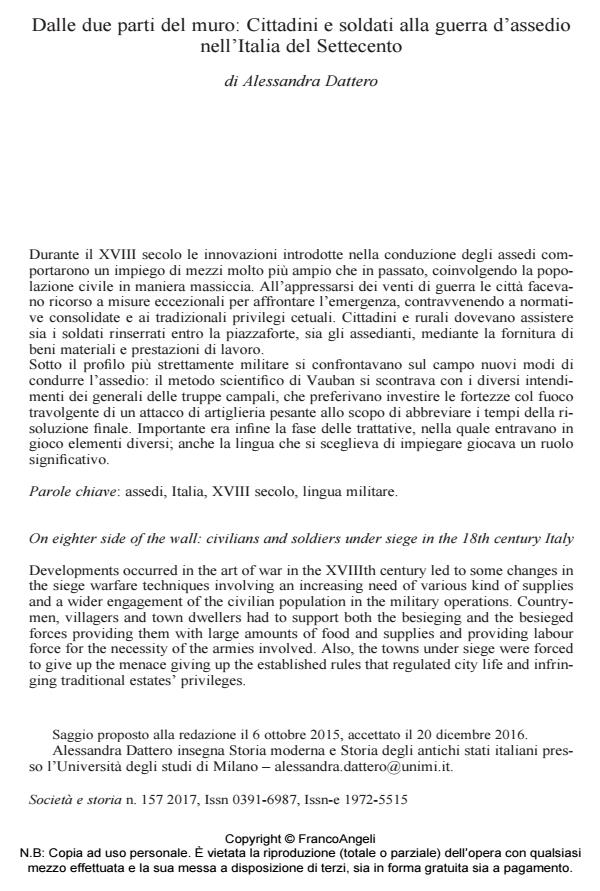On eighter side of the wall: civilians and soldiers under siege in the 18th century Italy
Journal title SOCIETÀ E STORIA
Author/s Alessandra Dattero
Publishing Year 2017 Issue 2017/157
Language Italian Pages 25 P. 479-503 File size 86 KB
DOI 10.3280/SS2017-157004
DOI is like a bar code for intellectual property: to have more infomation
click here
Below, you can see the article first page
If you want to buy this article in PDF format, you can do it, following the instructions to buy download credits

FrancoAngeli is member of Publishers International Linking Association, Inc (PILA), a not-for-profit association which run the CrossRef service enabling links to and from online scholarly content.
Developments in occurred the art of war in the XVIIIth century led to some changes in the siege warfare techniques involving an increasing need of various kind of supplies and a wider engagement of the civilian population in the military operations. Countrymen, villagers and town dwellers had to support both the besieging and the besieged forces providing them with large amounts of food and supplies and providing labour force for the necessity of the armies involved. Also, the towns under siege were forced to give up the menace giving up the established rules that regulated city life and infringing traditional estates’ privileges. From a military point of view it is interesting to note that in this period the scientific siege method perfected by Vauban in the late XVIIth century was more and more frequently disregarded by field army generals, who preferred to storm the towns relying mainly on artillery firepower and overwhelming odds in order to hasten the capitulation of the fortresses. A special attention has to be paid to the negotiations that usually took place during a siege: in this phase several different questions played a key role, for example the choice of the language to be adopted in the talks between the contenders.
Keywords: Siege Warfare, Italy, XVIIIth Century, Military Language.
- Quale storia della società? Uno sguardo sull'epoca moderna Paola Bianchi, in SOCIETÀ E STORIA 178/2023 pp.711
DOI: 10.3280/SS2022-178005
Alessandra Dattero, Dalle due parti del muro: Cittadini e soldati alla guerra d’assedio nell’Italia del Settecento in "SOCIETÀ E STORIA " 157/2017, pp 479-503, DOI: 10.3280/SS2017-157004